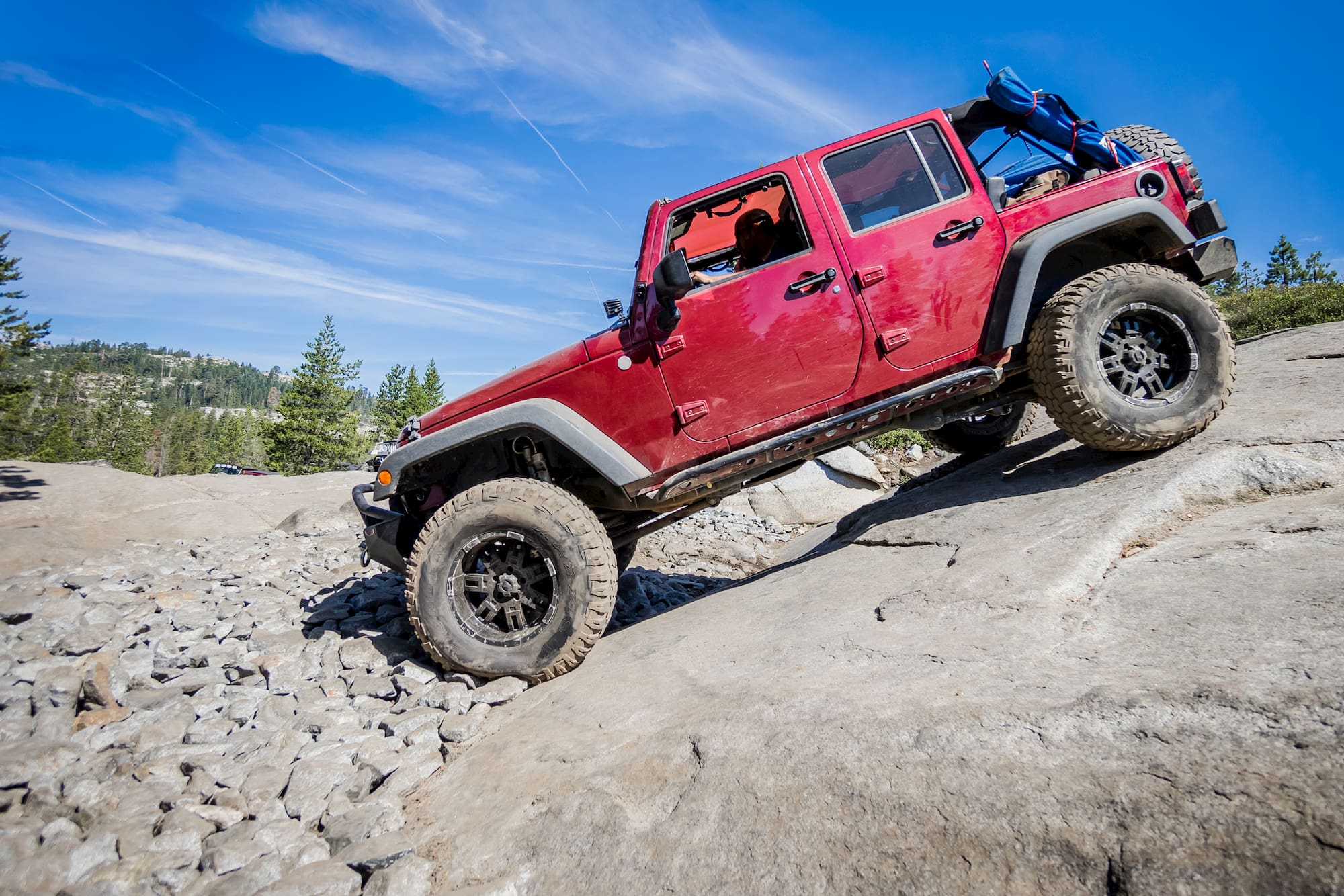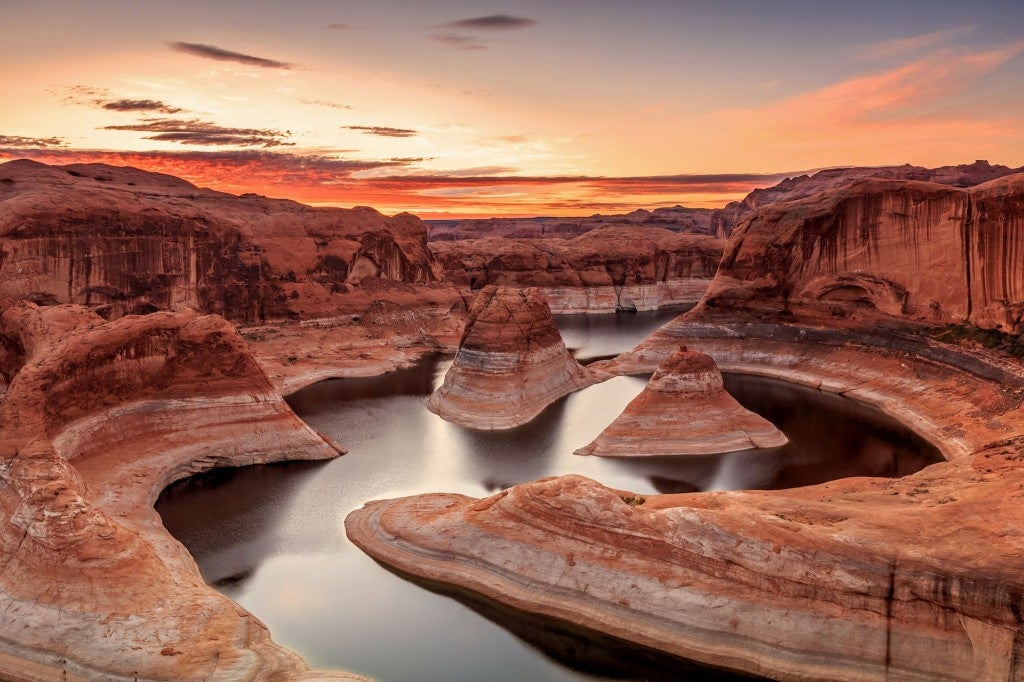This article about the Rubicon Trail was brought to you by our friends at Midland Radio. Their long distance walkie talkies are a favorite among overlanders who depend on reliable communication, on and off the trail.
The Sierra Nevada offers a spread of adventure opportunities for any off-roader looking to explore. Located within these soaring mountains is the Rubicon Trail, an off-road trail that offers the beauty and isolation that make this landscape of California so special. Here’s what off-roaders need to know before they begin their journey across old Gold Rush territory.
The Rubicon Trail: Technical Off-Road Adventure
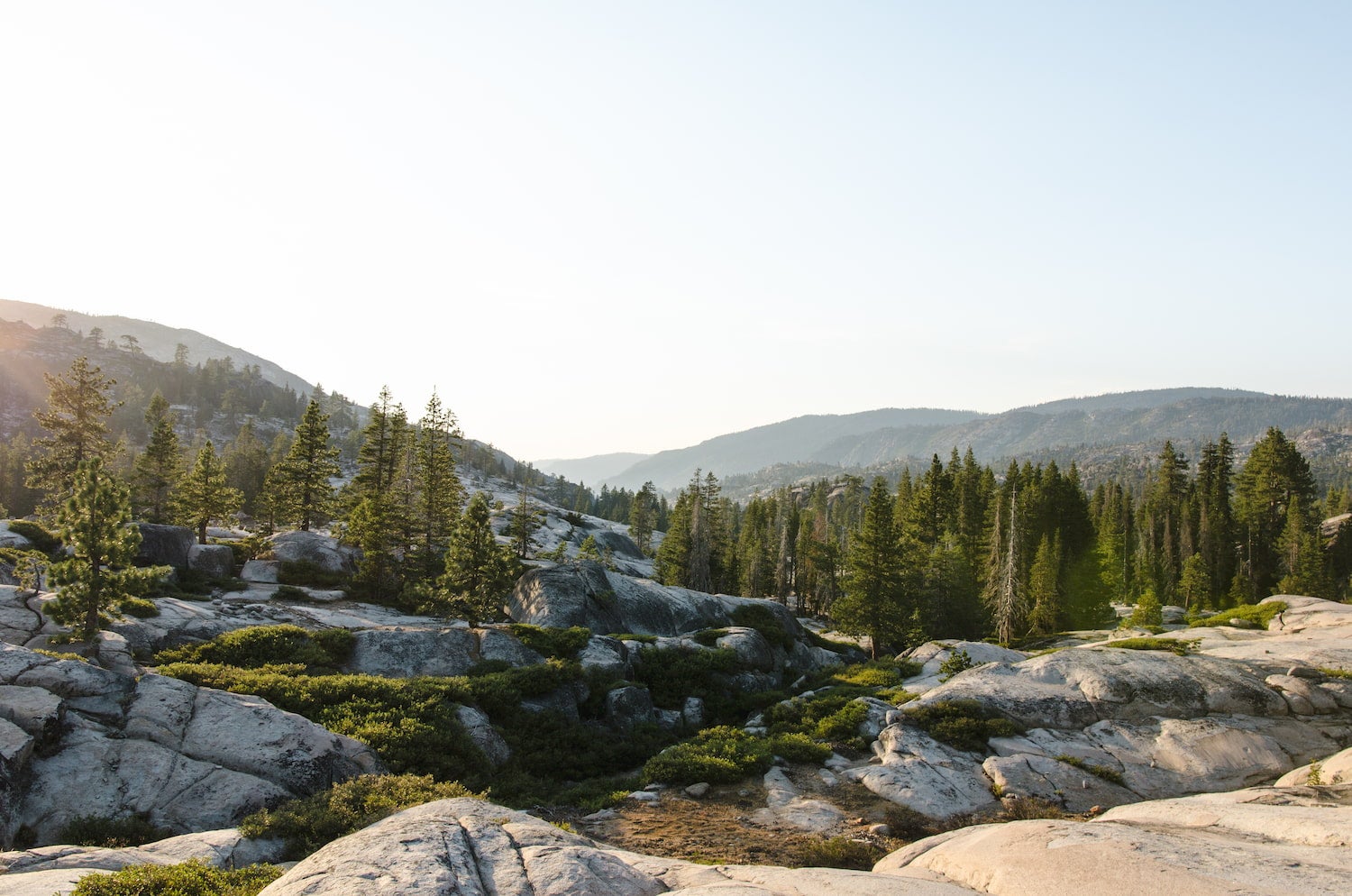
The Rubicon Trail is a 22-mile off-road adventure that cuts across the Sierra Nevada, just outside of Lake Tahoe. It boasts stunning, panoramic views of the Sierra Nevada, fields of boulders and interlocking flat stone, and sweet-smelling pine and fir trees.
Some parts of the trail cross through the Eldorado National Forest. This forest is home to porcupine, coyotes, badgers, mule deer, black bear, red foxes, wolverines, pine martens, and bobcats.
Off-road aficionados will experience some of the most technical off-road driving on the continent along the Rubicon Trail. It is deemed by many as the most difficult OHV (off-road highway vehicle) route in the nation. Although it’s only 22 miles long, it generally takes experienced off-roaders 5 hours to complete. This is not a trail for vehicle owners who are concerned about scratches or dents.
The Rubicon Trail is also not what one would call a “safe” route, and with the wrong person behind the wheel, the route can become very dangerous. The Rubicon Trail is for experienced off-roaders only, but it’s destined to be one of the most memorable off-road adventures you’ll experience.
Combine the journey with some Lake Tahoe Camping for an immersive experience in the natural beauty of the region.
A Brief History of the Rubicon Trail
The Sierra Nevada was home to multiple Native American nations, including the Maidu-Nisenan, Washoe, and Sierra-Miwok. The Rubicon Valley long served as a place where trade paths crossed.
As white settlers moved into the area following the 1840s Gold Rush and native peoples were dispossessed, the Rubicon experienced considerable change. In 1887, the Eldorado County Supervisors declared the trail a public right-of-way, and the Rubicon Trail area facilitated the movement of turkeys, cattle, and sheep for over 60 years.
The 1920s saw the first motor vehicles, and intrepid motorists used rope-and-plank bridges to traverse sections of the modern-day Rubicon Trail.
In 1953, the Rubicon Trail hosted the first Jeep Jamboree, which continues every year to this day on the last weekend of July.
Starting the Rubicon Trail
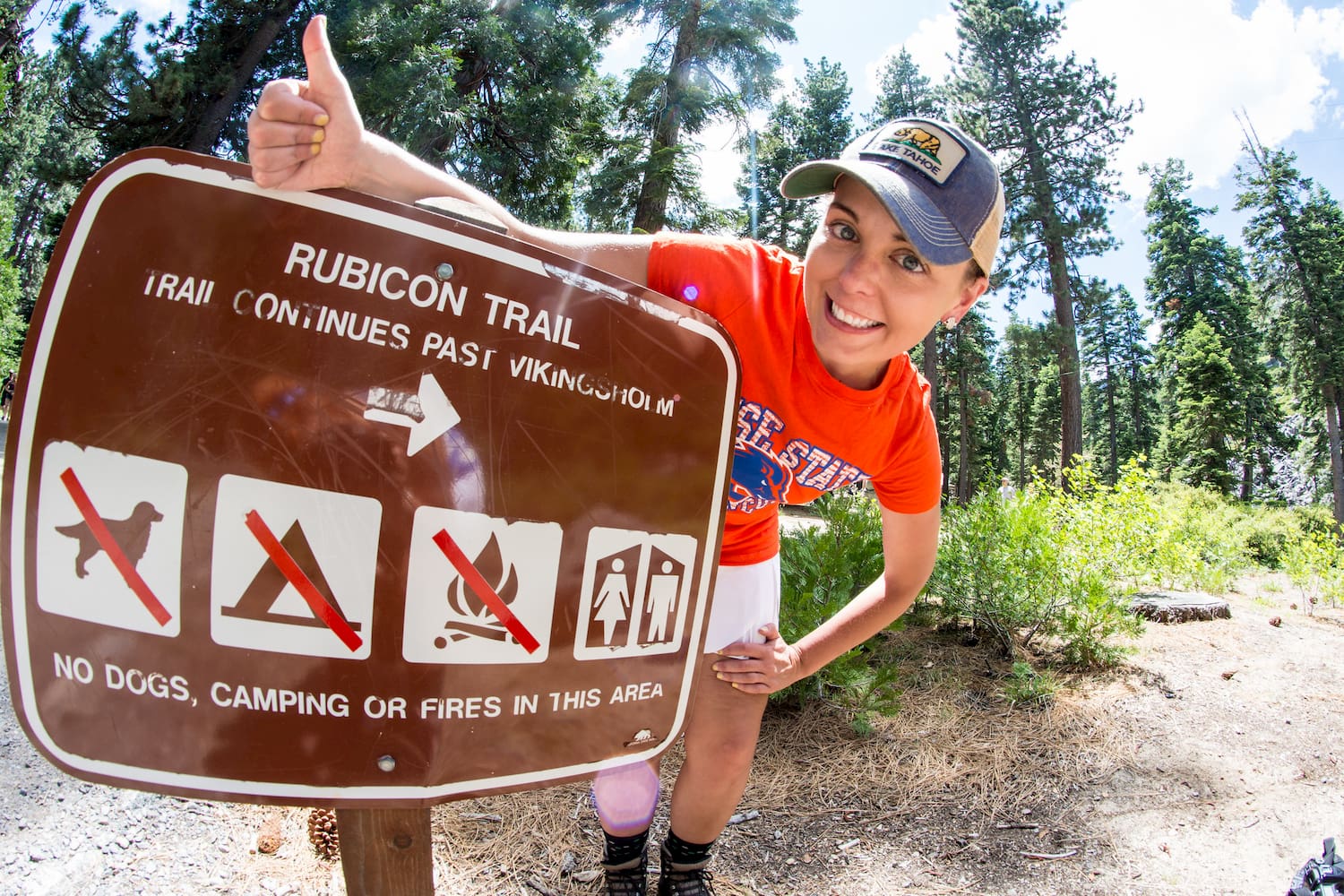
Image from m01229 on Flickr. CC BY-SA 2.0
The trail is generally run from west to east. There are two western trailheads. The most popular trailhead is located at Loon Lake, where a great campsite hosts fantastic camping, swimming, boating, fishing, hiking, and horseback riding. The “true” western trailhead is Wentworth Springs, with the two alternative starts converging at Ellis Springs. The eastern terminus of the Rubicon Trail is in Georgetown, California, nestled into the sides of the western slopes of the Sierra Nevada.
When to Hit the Rubicon Trail
The Rubicon Trail changes every day, depending on weather and conditions. Trees fall, and rocks move. Off-roaders attempt the trail year-round, but most opt for the warm, dry months of the Sierra Nevada summer.
Harsh winter conditions and spring run-off can leave the trail impassable, but on the right winter or spring day, conditions can be navigated for an extra challenge. It’s highly recommended that less experienced off-roaders attempt the trail on an accommodating summer day. Fallen Leaf Campground is a popular camping destination for off-roaders throughout all seasons.
Get Your Vehicle Ready
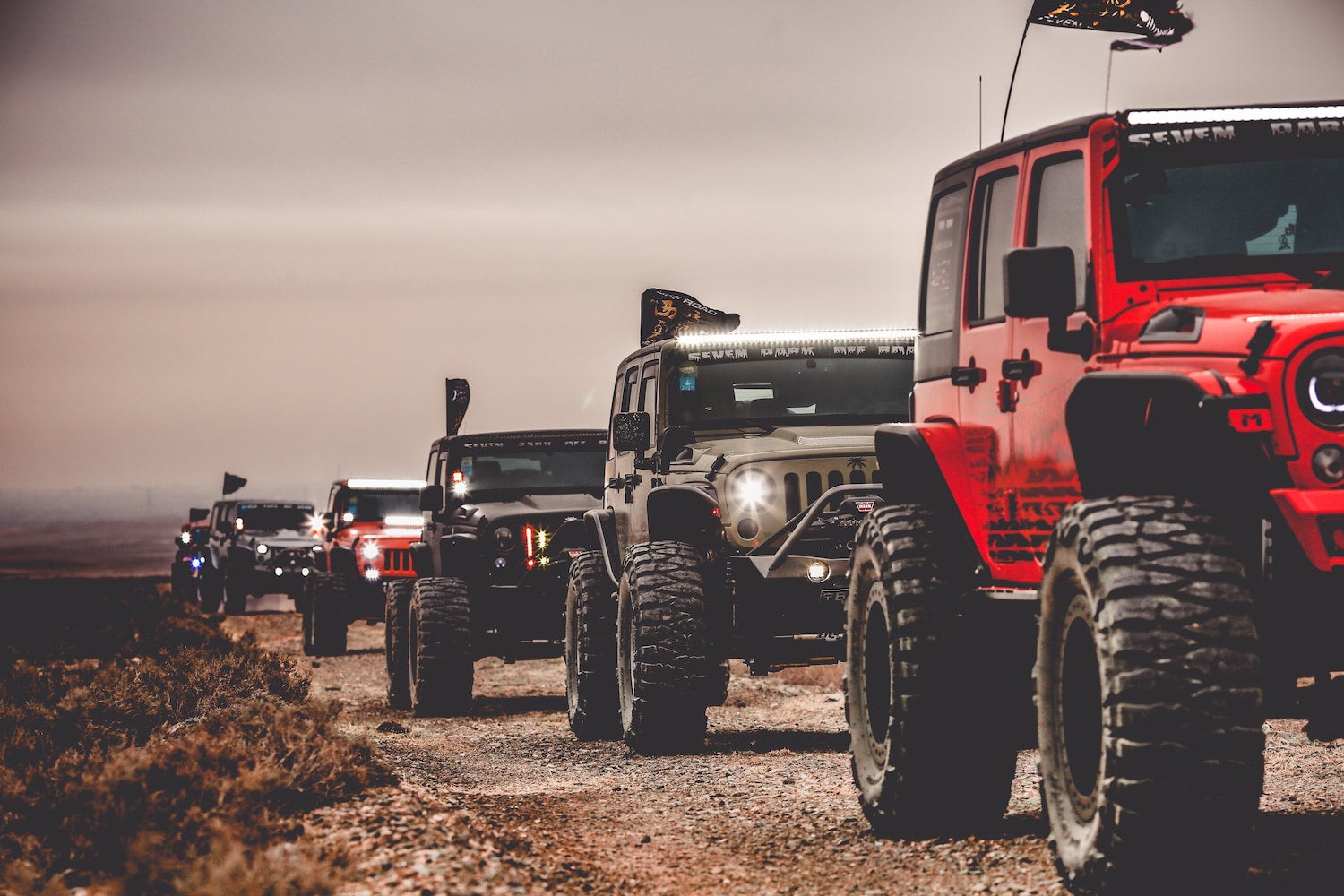
Pan_photo / Shutterstock.com
The trail attracts a wide variety of vehicles, from dirt bikes to street-legal SUVs to Jeeps kitted out, particularly for the Rubicon Trail. Regardless of your vehicle choice, spare parts, tools, a satellite communicator, extra water, and food are all highly recommended.
If you’re in a four-wheel-drive vehicle, strongly consider reinforcing your vehicle with skid plates, armored bumpers and sides, rock rails, front and rear locking differentials, and axle lockers. A lower control arm skid plate will protect your vehicle from the extremely common smashed lower front control arm mount.
For automatic vehicles, the recommended crawl ratio is 55:1, while the recommended crawl ratio is 65:1 for manuals. Tires with healthy tread and three-ply sidewalls are essential. Most drivers recommend 35-inch tires made specifically for off-roading.
Final Thoughts
For an off-road experience of a lifetime that will test your mental and physical limits as well as your technical skills and preparation, the Rubicon Trail is a must. It offers the courageous motorist a chance to travel a historical path through one of the nation’s most treasured natural landscapes. Get your vehicle ready, bring supplies, and book your campground. It’s time for an adventure!
This article about the Rubicon Trail was brought to you by Midland USA.
Their two way radios are a favorite among overlanders.
The Dyrt is the only camping app with all of the public and private campgrounds, RV parks, and free camping locations in the United States. Download now for iOS and Android.Popular Articles:
Articles on The Dyrt Magazine may contain links to affiliate websites. The Dyrt receives an affiliate commission for any purchases made by using such links at no additional cost to you the consumer.

